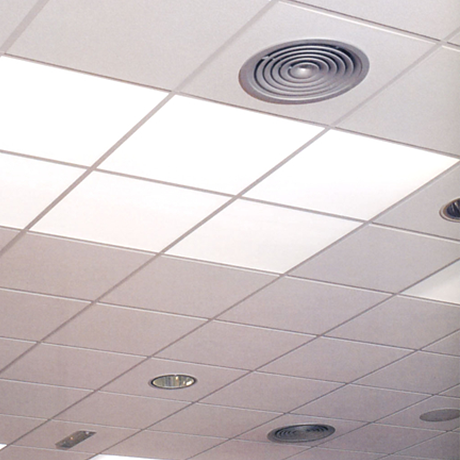
Anyone with a modicum of common sense can spot the obvious differences between home air conditioning systems and business models. You begin by making assumptions regarding the scale of the project. A standard 3 or 4 bedroom home requires less capacity than a large business. In short, the business installation needs power while the home model, unless the residence is a palatial mansion, shops for a model that can cool a smaller area.
Power is a good starting point as is the BTU rating of the equipment. This acronym represents the British Thermal Units cooling capacity of the air conditioner. In terms of air conditioning, this figure conveys more relevancy than simple electrical energy output as measured in kilowatts. For starters, the BTU rating includes room size as part of the mathematics behind the figure. Manufacturers print this number on the front of the box, making shopping that much simpler.
The hallmarks of home design are established by living space and privacy requirements. We separate the interior into multiple rooms that are suited for bathing, cooking and sleeping within. As such, the installation methodology can be as simple as a window casement air conditioner or as sophisticated as a central air conditioning system. The division of space allows the inhabitants to select smaller models and focus on a limited cooling scenario, thus saving energy.
Businesses, meanwhile, use larger floor spaces and support this outline with a sprinkling of individual offices, rooms that would be occupied by managers and specialist equipment. A multi-zone air conditioning solution is highly recommended within this setup. Imagine one zone set to deliver a cool breeze to the staff, something around the 19°C mark will keep productivity high. Management personnel would then employ independent thermostats, but here's where things get tricky. Business configurations tend to assign areas of the building to technical assets. If the business is large enough, this configuration could even include a small server room. At the very least, several printers, computers and copiers will be dotted around the office. It's therefore essential that the installation accounts for hot-running equipment. We'd include high-powered electrical tools and machinery in this category.
All of the above factors have an impact on installation practices and must be evaluated as part of an AC installation strategy. The home may be too small for in-wall ducts and unwilling to compromise by having unsightly ducts installed within everyone's eye line. In this case, select ductless split systems or a window unit. Again, the idea of a big box obscuring the window could look unattractive. The eventual winner for the project would then be hidden in the back garden as a central package. Meanwhile, a large business escapes these trial by allocating roof space and installing the split box above the work area. It's then time to call out a crane and a scaffolding contractor.
Phone: 1300 672 235
Operating Hour:
9:00am to 5:30pm (Mon-Fri)
Service areas - Suburbs
Email: subcool@bigpond.net.au
Optimized by NetwizardSEO.com.au